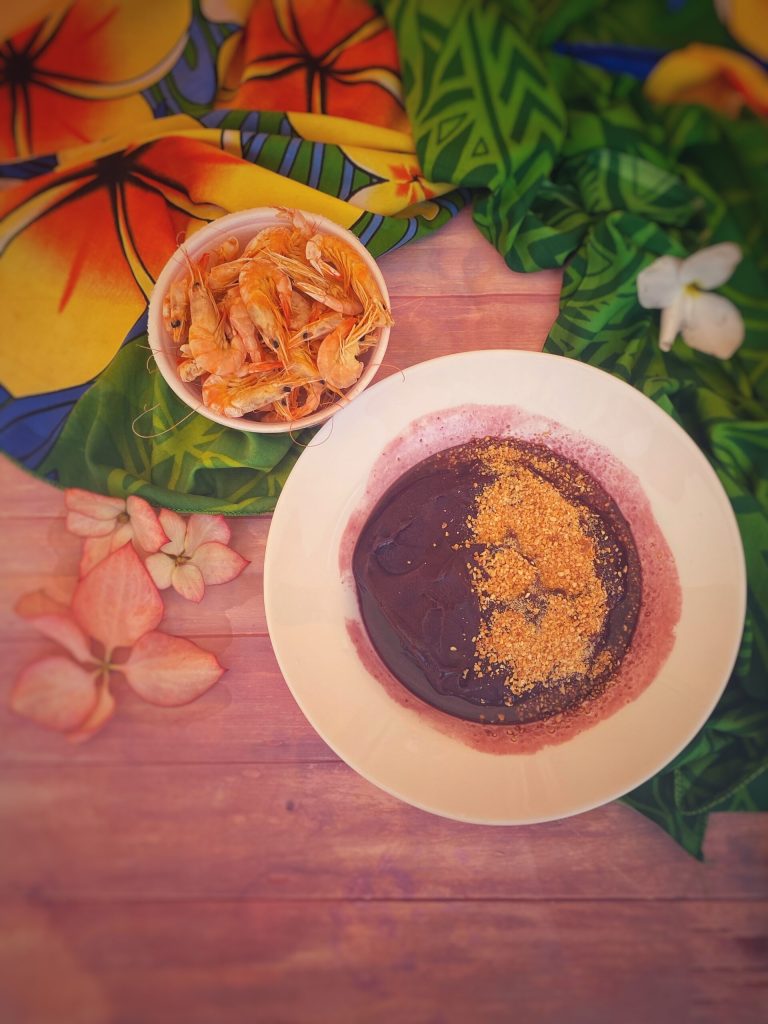The Juçara, as it is called in Maranhão, or açaí, as it is known in the rest of the country, is a delicacy that can be found in various places in São Luís, but it is at the Tulhas market, located in the historic center of the capital of Maranhão, that it can be most appreciated.
Here, one of the most traditional ways to eat it (see recipe), is by adding farinha d’agua, made from fermented manioc flour, and dried shrimp, cold or at room temperature.
The juçara is extracted from a palm of the Atlantic forest with the same name and although it is not found in the state of Maranhão – Northeast Brazil – it is still called that here.
After extraction, it is strained with filtered water, resulting in a dark purple liquid.
The difference with açaí lies only in the palm from which it is extracted.

- Cost: Economical
- Preparation time: 5 Minutes
- Portions: 1 person
- Cooking methods: No cooking
- Cuisine: Brazilian
- Seasonality: All seasons
Ingredients
- 14 oz juçara (preferably unsweetened)
- to taste dried shrimp
- to taste farinha d'agua (or farofa)
Steps
Soak the dried shrimp in water for a few hours.
Serve the juçara with farinha d’agua on top and shrimp on the side.

FAQ (Questions and Answers)
What is the difference between Juçara and Açaí?
Açaí, scientific name euterpe oleracea, is the palm found in the states of the northern region of the country, with the Amazon climate, and in some states of the northeastern region. It is used for the fruit pulp.
The juçara, scientifically known as euterpe edulis, is the palm found in part of the Cerrado and throughout the Atlantic forest.
It is primarily used for heart of palm production.How is farinha da agua made? What can I substitute it with?
It is flour made with peeled manioc softened for about 4 days in running water.
The manioc is soaked in the same clean water inside large pots until it ferments and softens.
You can use common farofa that is sold in specialized stores and online.

